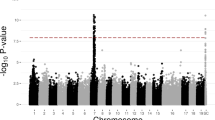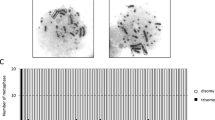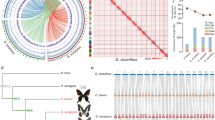Abstract
SUPERNUMERARY chromosomes occur sporadically in plants and animals. In the animal kingdom, they have been observed in at least 50 insects and two turbellarians, and they may be present or absent in different populations of the same species1. They are generally considered to be inert as they are usually heterochromatic and their carriers are not distinguishable morphologically. The chromosomal polymorphism that they confer on some populations suggests that they play an adaptive part in the success of the population1,2. In plants supernumerary chromosomes have a harmful effect on vigour and fertility, and the effect becomes more pronounced as their number increases3. The work of Lewis4 and Fröst5 has suggested that their presence may be an adaptation to arid regions3.
This is a preview of subscription content, access via your institution
Access options
Subscribe to this journal
Receive 51 print issues and online access
$199.00 per year
only $3.90 per issue
Buy this article
- Purchase on SpringerLink
- Instant access to full article PDF
Prices may be subject to local taxes which are calculated during checkout
Similar content being viewed by others
References
White, M. J. D., Animal Cytology and Evolution (Cambridge University Press, 1954).
Smith, S. G., J. Heredity, 47, 157 (1956).
Muntzing, A., Proc. Tenth Intern. Con. Gen., Montreal, 1, 453 (1958).
Lewis, H., I.U.B.S. Symposium on Genetics of Population Structure, Pavia, 1953, 114.
Fröst, S., Hereditas, Lund, 44, 112 (1958).
Author information
Authors and Affiliations
Rights and permissions
About this article
Cite this article
ROBERTSON, J. Effect of Supernumerary Chromosomes on Sex Ratio in Calligrapha philadelphica L. (Coleoptera: Chrysomelidae). Nature 204, 605 (1964). https://doi.org/10.1038/204605a0
Issue Date:
DOI: https://doi.org/10.1038/204605a0



